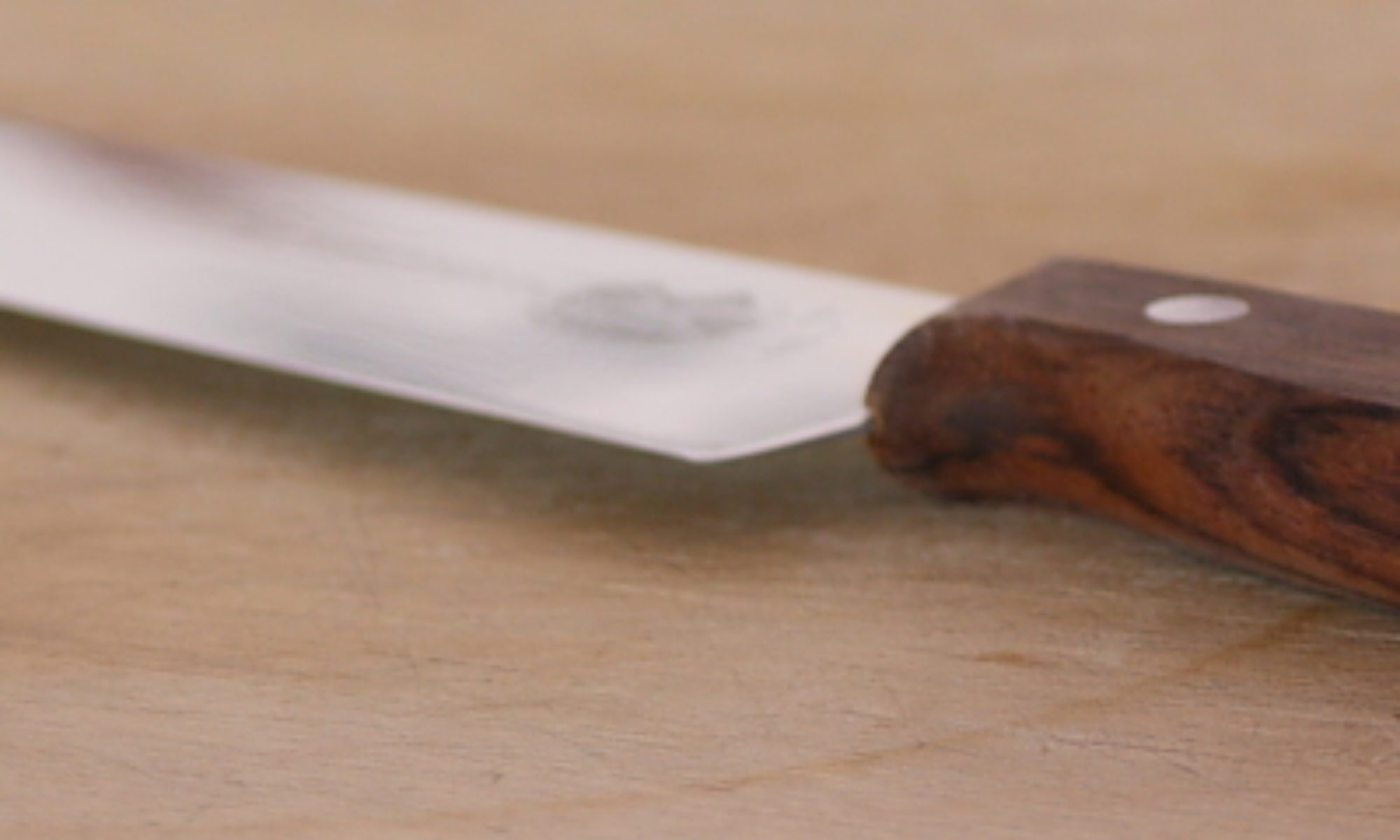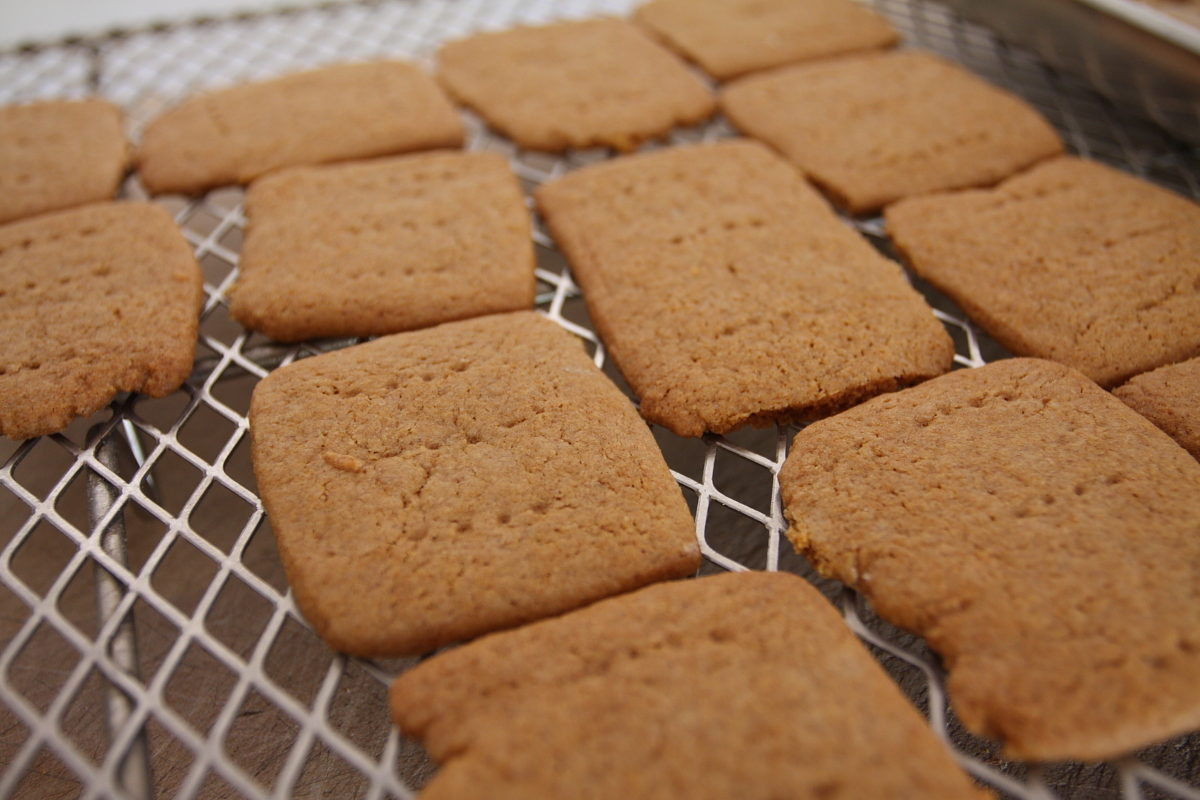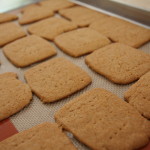
Sorry, but we were so excited to try this recipe that we forgot to take photos while making up the dough. It wasn’t because Graham crackers are so exciting; rather, what you can do with Graham crackers. Think crusts for pies, cheesecakes, tarts, s’mores and so on, and, for the best crusts, you need the best Graham crackers, right?
Besides, do you really want to go to the trouble of making your very best dessert and put it in a crust of Graham crackers that you didn’t make yourself? Well, at least sometimes you’ll want to make the crackers, so you might as well see how. It turns out that they are easy; follow along (without pictures for making the dough).
This recipe was modified from one in Baking for Friends, by Kathleen King. Basically, we changed it to use unsalted butter, and modified it for light brown sugar. That’s it.
Graham Crackers
Ingredients
- 1/3 cup honey
- 1/3 cup water
- 1 tsp vanilla extract
- 1/2 tsp molasses
- 3/4 cup light brown sugar [150 g]
- 1 tsp baking soda
- 1 tsp salt
- 1 1/3 cup all-purpose flour
- 1 1/4 cup whole wheat flour
- 6 Tbs cold unsalted butter cut into pieces
Instructions
- In a small bowl, mix together honey, water, molasses, and vanilla.
- In the bowl of a food processor, pulse together the flours, brown sugar, salt, and baking soda.
- Distribute the butter chunks over the flour mixture, and pulse until you have a crumbly mixture.
- Pour the honey mixture over the top, and pulse until just combined.
- Scoop the dough out onto a lightly floured surface and shape into a rectangle. Wrap in plastic and chill in the refrigerator for 2 hours or so, until the dough is firm, but not hard.
- Preheat oven to 300°F, center a rack, and line a rimmed baking sheet with baking parchment or a silicone baking mat.
- Cut off 1/3 of the rectangle, replacing the remaining dough in the refrigerator. Roll out the dough to 1/8-inch thick.
- Cut the dough into 2-inch squares and poke holes through the crackers with the tines of a fork.
- Transfer to the lined baking sheet, placing the crackers close together, but not touching, and bake until the crackers are slightly firm when pressed with a finger tip and the edges are beginning to brown, about 25 minutes.
- Let the crackers cool for 3-4 minutes on the baking sheet, then remove to a cooling rack and let cool completely. Repeat with the remaining dough.
Ingredient discussion:
Use local honey; support your local bees! The molasses is in there because we didn’t have dark brown sugar. Tip: brown sugar is nothing but 1 Tbs molasses to 1 cup granulated sugar. Nothing more, nothing less. We always use unsalted butter for baking; why let someone else decide how much salt to put in your recipe?
Procedure in detail:
Mix liquids. In a small bowl, mix together honey, water, molasses, and vanilla. We used a clear measuring cup to make it super easy. Add the honey up to the 1/3 cup line, add water to the 2/3 cup line, add vanilla and molasses, and stir.
Mix dry ingredients. In the bowl of a food processor, pulse together the flours, brown sugar, salt, and baking soda. Our processor sometimes shoots flour out onto the counter. We solved that by setting it in the sink when we pulse.
Add butter. Distribute the butter chunks over the flour mixture, and pulse until you have a crumbly mixture.
Add liquids. Pour the honey mixture over the top, and pulse until just combined.
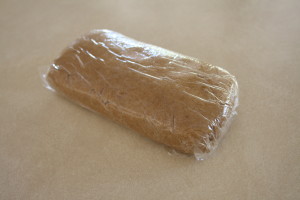
Shape and cool. Scoop the dough out onto a lightly floured surface and shape into a rectangle. Wrap in plastic and chill in the refrigerator for 2 hours or so, until the dough is firm, but not hard.
Preheat oven to 300°F. And center a rack, then line a rimmed baking sheet with baking parchment or a silicone baking mat.
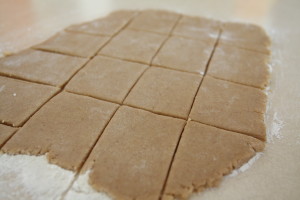
Roll out. Cut off 1/3 of the rectangle, replacing the remaining dough in the refrigerator. Roll out the dough to 1/8-inch thick. This dough is very soft and a bit on the sticky side, making it somewhat difficult to work. You might try rolling it out on a sheet of waxed paper.
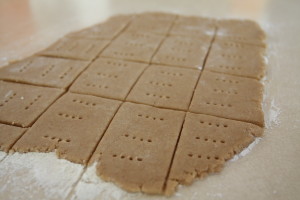
Cut and dock. Cut the dough into 2-inch squares and poke holes through the crackers with the tines of a fork. This is known as docking and it keeps the crackers from puffing up while baking. Just like store-bought Graham crackers.
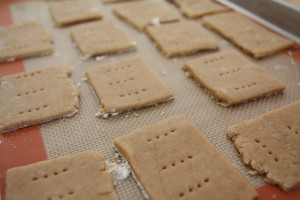
Bake. Transfer to the lined baking sheet, placing the crackers close together, but not touching, and bake until the crackers are slightly firm when pressed with a finger tip and the edges are beginning to brown, about 25 minutes.
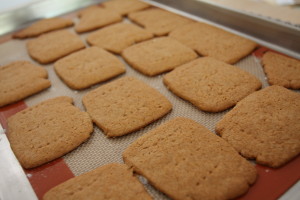
Cool. Let the crackers cool for 3-4 minutes on the baking sheet, then remove to a cooling rack and let cool completely.
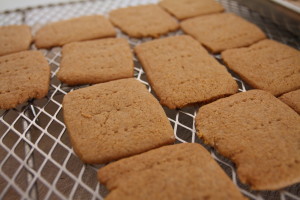
Repeat with the remaining dough.
These are much better than, and a bit different from, the standard big-name brand Graham crackers. They have a slight caramel flavor and are a bit chewier and sweeter, kind of like a cross between a cracker and a cookie, making them good for a light dessert or snack. They also lack that gummy flavor/taste combination that Graham crackers usually have. Being a bit sturdier, they will work exceptionally well for s’mores. On taste and flavor, they deserve five stars, but, since the dough is a bit troublesome — don’t let this dissuade a real scratcher like yourself — we have to cut back to four stars.
